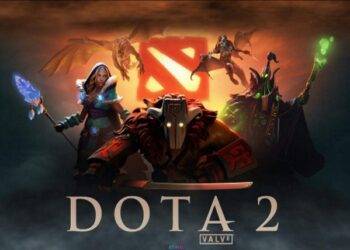At its core, quantum skin sculpting utilizes principles from quantum mechanics to simulate skin textures and details at a molecular level. This cutting-edge technique mimics the natural properties of human skin, enabling developers to create characters with lifelike appearances and movements. By simulating the interaction of light with skin molecules, developers can achieve a level of detail that captures subtle nuances like translucency, texture, and elasticity. The integration of quantum aesthetics into game design not only enhances visual fidelity but also paves the way for more dynamic and interactive gaming experiences. This breakthrough offers a new toolkit for artists and developers who strive to blur the lines between virtual and physical realities, setting new standards for what digital characters can achieve.
The Role of Nano-Detailing in Character Design
Nano-detailing plays a pivotal role in quantum skin sculpting, allowing for the creation of hyper-realistic characters. This technique involves the meticulous crafting of skin textures and features, down to the minutest detail. By employing nano-detailing, developers can achieve a level of realism that was previously unattainable, bringing characters to life in ways that captivate and engage players. Nano-detailing allows for the simulation of imperfections, such as pores and fine lines, which are crucial for creating believable human faces. This capability extends beyond facial textures, impacting the overall physical representation of characters, including how they age, express emotions, and react to environmental factors. Through these advancements, developers can craft more personalized and relatable characters, enhancing player immersion.
Advanced Skin Treatments and Quantum Skin Care
The concept of quantum skin care extends beyond traditional game design, drawing inspiration from advanced skin treatments used in the beauty industry. By simulating these treatments in a digital environment, developers can manipulate skin features with precision and accuracy. This approach not only enhances the aesthetic quality of characters but also provides a framework for exploring new dimensions of character customization and personalization. Techniques borrowed from the beauty industry, such as micro-needling and laser treatments, can be translated into virtual procedures, allowing characters to evolve and adapt over time. This opens the door for dynamic character development, where players can influence the appearance and health of their digital avatars, creating a more engaging and interactive gaming experience.
Implementing Quantum Skin Sculpting in Unreal Engine
Unreal Engine, renowned for its versatility and power, provides an ideal platform for implementing quantum skin sculpting techniques. With its robust toolset and advanced rendering capabilities, developers can fully leverage the potential of quantum aesthetics to create Metahumans that are not only visually stunning but also functionally versatile. The engine’s ability to handle complex simulations and high-resolution textures makes it a perfect match for the demands of quantum skin sculpting. Developers can use Unreal Engine’s real-time rendering capabilities to experiment with different lighting conditions and environmental settings, ensuring characters maintain their realism across various scenarios. This adaptability is crucial for creating immersive worlds where characters seamlessly interact with their surroundings, enhancing the overall gaming experience.
Collaboration with Game Development Companies in India
India has emerged as a hub for innovative game development, with companies pioneering the use of cutting-edge technologies like quantum skin sculpting. By collaborating with these companies, developers can harness local expertise and creativity, driving the evolution of Metahuman design forward. This collaboration also opens up opportunities for outsourcing, allowing companies to hire Unreal Engine developers with specialized skills in quantum aesthetics. The diversity and talent available in the Indian gaming industry provide a rich resource for creative solutions and unique design perspectives. These partnerships can lead to the development of culturally diverse characters and narratives, enriching the global gaming landscape and appealing to a broader audience.
Leveraging Quantum Skin Sculpting Techniques
To fully realize the potential of quantum skin sculpting, developers must embrace a holistic approach that integrates various skin sculpting techniques. This involves not only the technical aspects of character design but also the narrative and emotional dimensions. By weaving these elements together, developers can create characters that resonate with players on a deeper level, enhancing the overall gaming experience. Integrating narrative-driven design with quantum skin sculpting allows for the development of characters whose appearances change in response to their story arcs. This dynamic relationship between aesthetics and storytelling enriches the gameplay, providing players with a more connected and emotionally engaging experience, as they witness characters evolve in tandem with the plot.
The Impact of Quantum Skin Sculpting on Game Development
The introduction of quantum skin sculpting has far-reaching implications for the gaming industry. It challenges traditional notions of character design and opens up new possibilities for storytelling and player engagement. By creating characters that are both visually and emotionally compelling, developers can craft narratives that are more immersive and impactful. This innovation pushes the boundaries of what digital characters can convey, offering richer storylines and more profound character development. The technology enables more authentic representations of human experiences, allowing players to explore complex themes through their interactions with the game world. This evolution in character design signifies a shift towards more meaningful and interactive storytelling.
Enhancing Storylines and Player Interaction
The realism afforded by quantum skin sculpting allows for more nuanced and complex character interactions. Players can connect with characters in meaningful ways, experiencing emotions and reactions that mirror real-life interactions. This level of engagement fosters a deeper connection between players and the game world, enhancing the overall storytelling experience. Characters can now exhibit a range of emotions through subtle facial cues and body language, offering players new ways to interpret and influence game narratives. This deeper interaction not only enriches the player’s journey but also encourages them to invest emotionally in the story, leading to more memorable and impactful gaming experiences.
Sparking Debates in the Gaming Community
As with any groundbreaking technology, quantum skin sculpting has sparked debates within the gaming community. Discussions around the ethical implications of hyper-realistic characters, the role of technology in storytelling, and the future of game design are prevalent. These debates not only engage the community but also drive innovation, encouraging developers to push the boundaries of what is possible. Ethical considerations include the potential for misrepresentation or the reinforcement of stereotypes, prompting developers to use this technology responsibly. The conversation also extends to the balance between realism and fantasy, questioning how much realism is necessary or desirable in gaming. These discussions are vital for the continued evolution of the industry, ensuring that technological advancements are aligned with community values and expectations.
Conclusion: The Future of Quantum Skin Sculpting in Gaming
Quantum skin sculpting represents a significant milestone in the evolution of game design. By marrying the precision of advanced skin treatments with the art of character creation, developers can craft experiences that are both visually stunning and emotionally resonant. As the gaming industry continues to evolve, embracing quantum aesthetics and nano-detailing will be key to staying at the forefront of innovation. This technology not only enhances the visual spectacle of games but also deepens the emotional and narrative complexity, offering players richer and more fulfilling experiences.
For game developers, journalists, and content strategists, understanding and leveraging the potential of quantum skin sculpting is essential. By doing so, they can create content that captivates audiences, fosters interaction, and drives the future of gaming forward. As we look to the future, the possibilities for quantum skin sculpting in gaming are boundless, promising an exciting era of creativity and exploration. The ongoing advancements in this field hold the potential to redefine the boundaries of digital storytelling, paving the way for a new generation of interactive entertainment that is as impactful as it is innovative.










